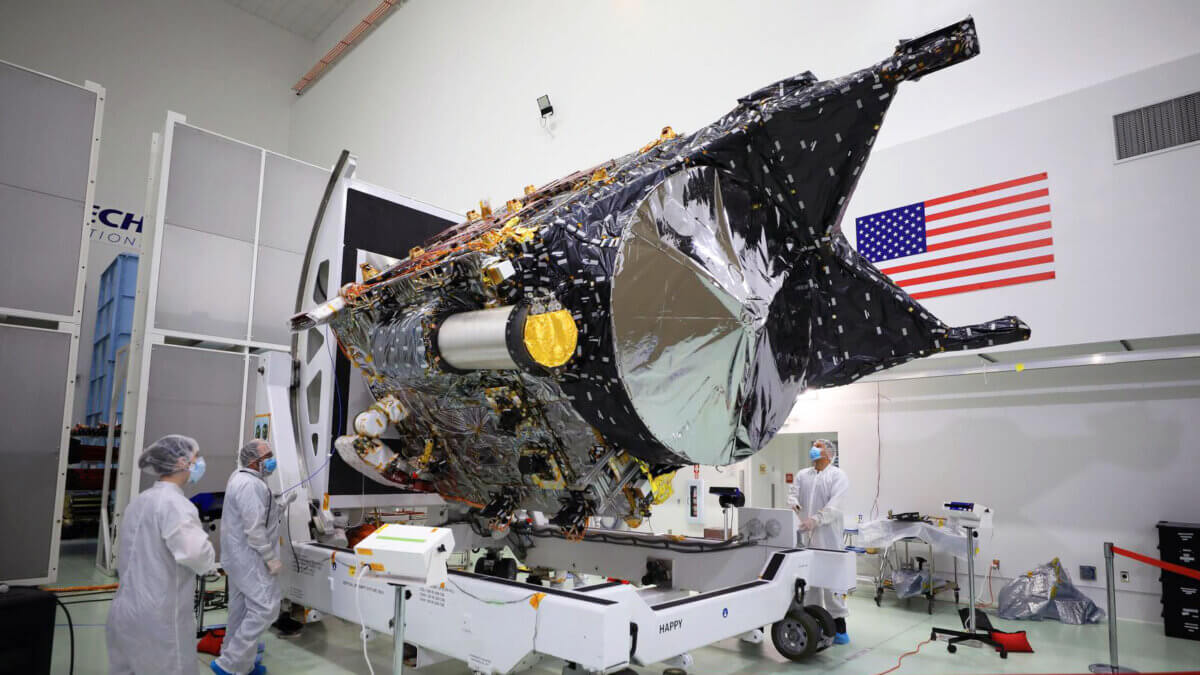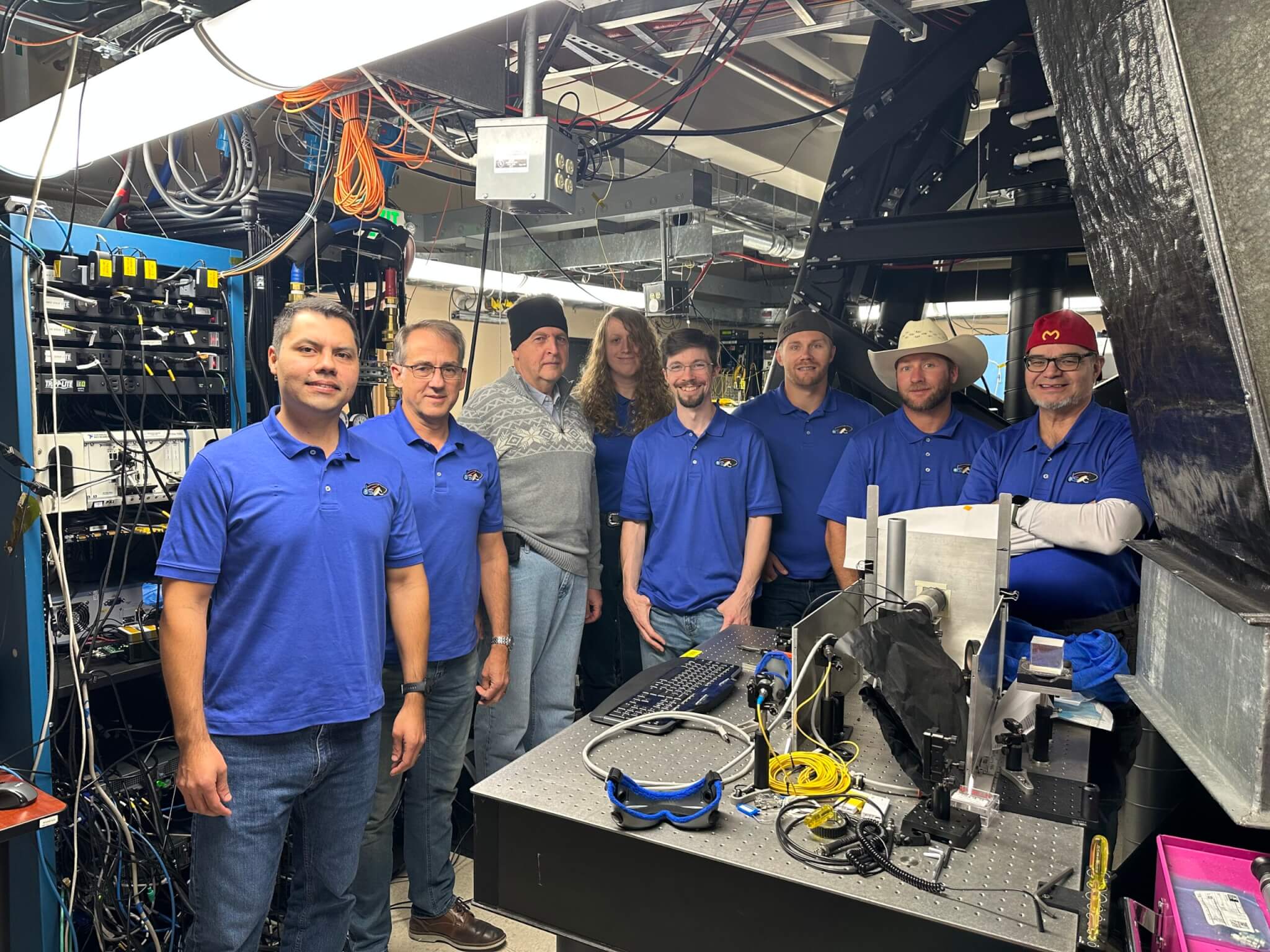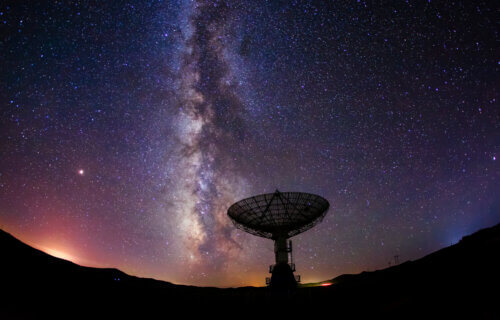PASADENA, Calif. — This gives a whole new meaning to “E.T. phone home.” In a seminal achievement, NASA’s Deep Space Optical Communications (DSOC) experiment has marked a significant milestone by achieving “first light.” The experiment successfully sent data via laser to and from a location nearly 10 million miles away, which is approximately 40 times farther than the distance between the Moon and Earth.
This represents the farthest-ever demonstration of optical communications.
DSOC is a cutting-edge technology experiment that has been deployed on NASA’s Psyche spacecraft, which recently embarked on a journey to the main asteroid belt situated between Mars and Jupiter. Managed by NASA’s Jet Propulsion Laboratory (JPL) in Southern California, DSOC is set to showcase the potential of high-bandwidth data transmission in deep space.

The experiment reached its “first light” milestone on Nov. 14 when its flight laser transceiver, a sophisticated instrument aboard the Psyche spacecraft, successfully locked onto an uplink laser beacon transmitted from the Optical Communications Telescope Laboratory at JPL’s Table Mountain Facility in California. This achievement was the result of extensive collaboration between the DSOC and Psyche operations teams.
“Achieving first light is one of many critical DSOC milestones in the coming months, paving the way toward higher-data-rate communications capable of sending scientific information, high-definition imagery, and streaming video in support of humanity’s next giant leap: sending humans to Mars,” says Trudy Kortes, director of technology demonstrations for the Space Technology Mission Directorate at NASA Headquarters in Washington, in a media release.

One of the primary objectives of the experiment was to perform “closing the link,” a procedure that involved simultaneously transmitting test data via both uplink and downlink lasers. While DSOC is not transmitting data related to the Psyche mission itself, it works closely with the Psyche mission-support team to ensure that its operations do not interfere with those of the spacecraft.
Before reaching this milestone, DSOC had to accomplish several key tasks, including removing the protective cover for the flight laser transceiver and powering up the instrument. Meanwhile, the Psyche spacecraft was undergoing its own checkouts, such as powering up its propulsion systems and testing the instruments that will be used to study the asteroid Psyche when it arrives there in 2028.
With the successful “first light,” the DSOC team is now focused on refining the systems that control the pointing of the downlink laser on the transceiver. This advancement will enable the project to demonstrate high-bandwidth data transmission from the transceiver to the Hale Telescope at Palomar Observatory, located at various distances from Earth. The data is encoded in the laser’s photons, which are quantum particles of light. A superconducting high-efficiency detector array is used to detect the photons, and signal-processing techniques extract the data from the photons received at the Hale Telescope.
The DSOC experiment aims to demonstrate data transmission rates 10 to 100 times greater than the state-of-the-art radio frequency systems currently used in spacecraft communication. While both radio and near-infrared laser communications use electromagnetic waves to transmit data, near-infrared light packs the data into significantly tighter waves, enabling ground stations to receive more data. This advancement will greatly benefit future human and robotic exploration missions and support higher-resolution scientific instruments.
“Optical communication is a boon for scientists and researchers who always want more from their space missions, and will enable human exploration of deep space,” notes Dr. Jason Mitchell, director of the Advanced Communications and Navigation Technologies Division within NASA’s Space Communications and Navigation (SCaN) program. “More data means more discoveries.”

While optical communication has previously been demonstrated in low Earth orbit and up to the Moon, DSOC represents the first test of this technology in deep space. Achieving this milestone required precise “pointing” of the laser beam over millions of miles, akin to using a laser pointer to track a moving object from a great distance.
Additionally, the experiment must compensate for the time it takes for light to travel from the spacecraft to Earth over vast distances. At its farthest distance from Earth, DSOC’s near-infrared photons take approximately 20 minutes to reach Earth, requiring adjustments in the uplink and downlink lasers to account for the changing positions of both the spacecraft and Earth.
“Achieving first light is a tremendous achievement. The ground systems successfully detected the deep space laser photons from DSOC’s flight transceiver aboard Psyche,” says Abi Biswas, project technologist for DSOC at JPL. “And we were also able to send some data, meaning we were able to exchange ‘bits of light’ from and to deep space.”
The DSOC experiment is part of NASA’s ongoing efforts to advance optical communication technology. Funded by the Technology Demonstration Missions (TDM) program within NASA’s Space Technology Mission Directorate and the SCaN program within the agency’s Space Operations Mission Directorate, DSOC is set to open new avenues for deep space communication.
The Psyche mission, led by Arizona State University, is under the overall management of JPL. It is the 14th mission selected as part of NASA’s Discovery Program under the Science Mission Directorate. NASA’s Launch Services Program, based at the Kennedy Space Center, managed the launch service, and Maxar Technologies provided the high-power solar electric propulsion spacecraft chassis.
You might also be interested in:
- Best Of The Best Telescopes For Beginners In 2023: Top 5 Stargazers Most Recommended By Experts
- Historic power beam energy test paves way to zap energy to troops from SPACE
- Astronomers discover a powerful ‘mega’ laser in deep space

